Identifying extinct species is like solving mysteries (but these mysteries can be more than 56 million years old) and the only way to be certain is by studying the animals teeth. Even with one solitary tooth paleontologist can identify from which animal it belongs.
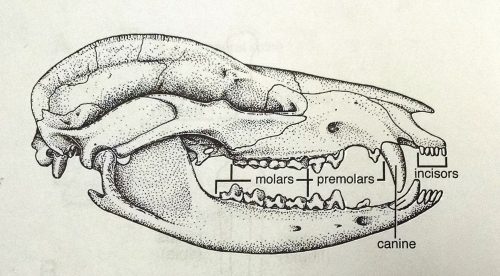
Mammals usually have four different type of teeth known as the incisors, canine, premolars and molars. Incisors are usually flattened for the purpose of obtaining food. Canines can be conical and larger, usually larger in carnivore which uses the canines to kill their prey or in male mammals which are use for mating purposes. Premolars and molars are also known as the cheek teeth; premolars have simpler crowns than molars and these are used for chewing food.
Paleontologist have developed a systematic method for identifying each teeth with numbers that refer to their relative position. Mammals usually have three incisors, one canine, four premolars and three molars in each of the four quadrangles of the mouth. The image below: A shows the upper skull known as the Maxilla; B show the lower part known as the jaw (mandible).
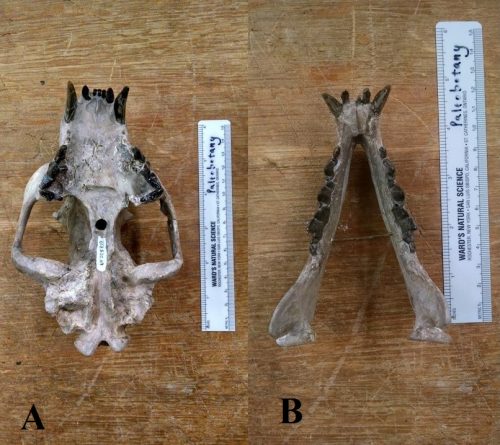
One of the many tasks given to us (the interns) at the museum is to identify specimens collected from Nebraska. These specimens were collected and stashed into small boxes inside the collections; boxes containing a soup of different species without identification. Most of the samples are broken fragments making it a challenge for their identification.But most of the samples are isolated teeth and some may even be attached to the jaw or maxilla.
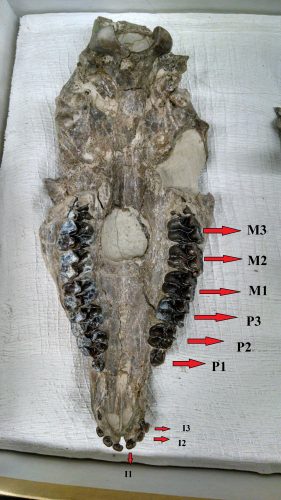
The maxilla is always catalog with upper case letters and the jaw with lower case letters. M3 always has three lumps, M1 and M2 look identical and the only way of identifying them (for a rookie like me) is if they are attached to the jaw; if they are solitary then I just leave it in the hands of the experts.
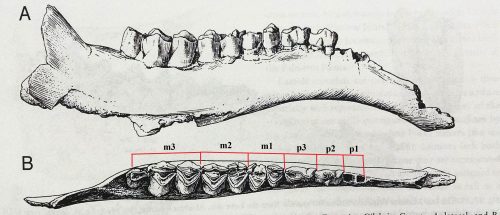
Once the teeth have been identified by their relative position we then look at the distinctive characteristics of each tooth and identify the species from which they belong.
Here are some examples of the teeth from the Nebraska collection:
Ischyromys sp. is known to be the oldest rodent ever found. Its remains can only be found in North America.
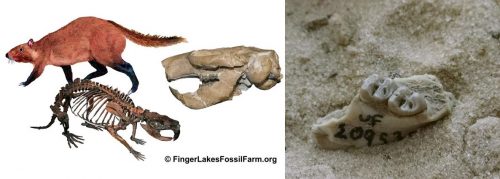
Titanothere (Brontothere) was similar to a modern Rhinoceros but it was not an early ancestor. Its remains can be found in South Dakota and in Nebraska.
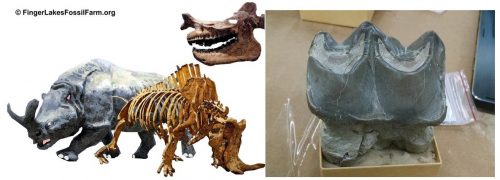
Leptomeryx sp. was a deer- like ruminant of small stature. They appeared in the mid Eocene and became extinct during the mid Miocene.
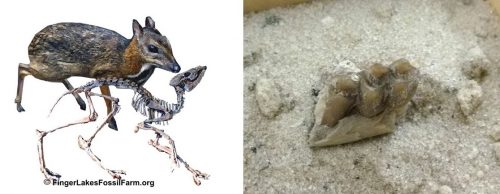
Palaeolagus sp. was a relative to modern rabbits. Their teeth are very common to find but complete fossils are extremely rare.

Mesohippus sp. is an ancient relative to the modern horse (Check my previous blog called “Pocket Horse” to learn more).
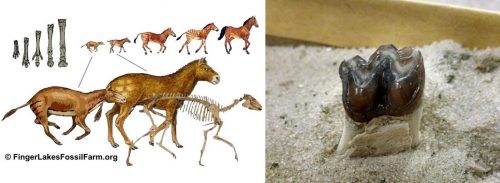
Hesperocyon sp. is an extinct genus of canid or dog, they were approximately about three feet in length and by observing their teeth it was most likely a carnivore.

When I started identifying the Nebraska collection I didn’t have the slightest clue of what species I was looking at. I had (and still do) to read some material and compare my samples with others that were already identified. Sometimes looking at only one tooth doesn’t seems like much but after doing some research the bigger picture appears. Identifying these species is like bringing them back to life by remembering that there once was a time in our ancient planet when these extraordinary creatures roam the Earth.